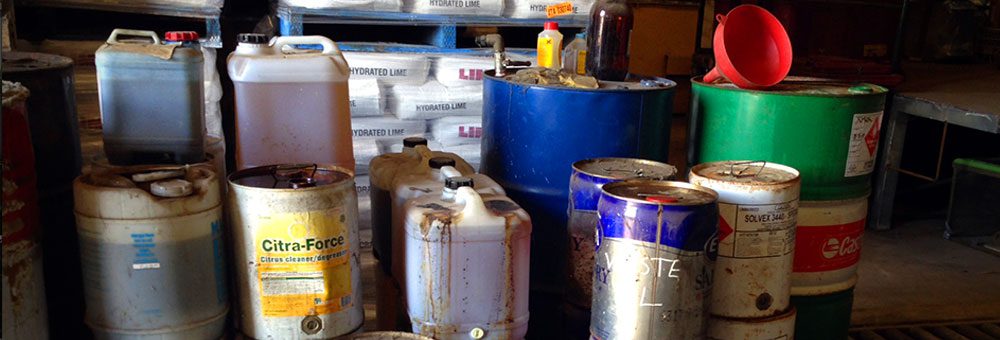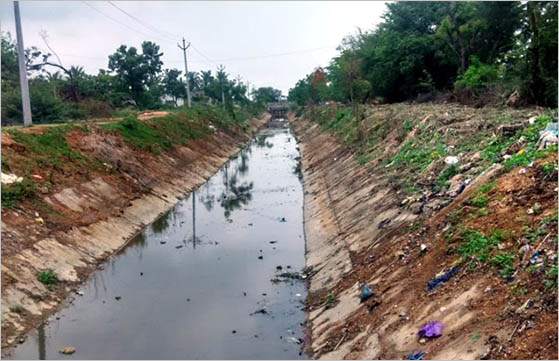How Fluid Garbage Disposal Functions: A Comprehensive Introduction of Strategies and Technologies Employed

Overview of Liquid Waste Types
The intricacy of fluid waste kinds demands a detailed understanding of their characteristics and ramifications for disposal. Fluid waste can generally be classified into numerous kinds, including commercial, metropolitan, farming, and contaminated materials. Each group exhibits distinctive residential properties, calling for certain monitoring strategies to mitigate ecological and health and wellness threats.
Industrial liquid waste stems from making processes and commonly contains a variety of impurities, such as heavy metals, solvents, and organic compounds. Local fluid waste, largely comprising wastewater from families and commercial facilities, contains raw material, nutrients, and pathogens (industrial wastewater treatment). Agricultural fluid waste, consisting of overflow from farms, might have fertilizers, pesticides, and pet waste, posturing dangers to water top quality and communities
Hazardous fluid waste is characterized by its toxicity, reactivity, or prospective to trigger harm. This group includes compounds like acids, bases, and certain chemicals that necessitate rigid handling and disposal procedures. Understanding these varied fluid waste types is important for developing effective disposal techniques and making sure compliance with ecological regulations. Correct category and characterization are important for carrying out ideal therapy strategies and minimizing the damaging effect on public health and wellness and the environment.
Physical Therapy Techniques

Testing is the initial step, where bigger fragments and debris are eliminated from the liquid waste using displays or grates. This procedure shields downstream devices from damages and makes sure smoother procedure. Following screening, sedimentation uses gravitational pressure to separate solids from liquids. In sedimentation containers, larger bits settle near the bottom, developing a sludge layer, while the clarified liquid can be additional dealt with.
Purification is another necessary approach that involves passing the liquid through permeable materials, such as sand or membrane layers, to record smaller sized bits. This action improves the high quality of the fluid, making it ideal for succeeding therapy processes.

Chemical Therapy Strategies
Chemical treatment methods are crucial for effectively handling fluid waste, particularly in dealing with liquified and colloidal pollutants that physical methods may not adequately eliminate. These methods utilize various chemical agents to counteract, precipitate, or change dangerous substances into less dangerous kinds.
One common approach is coagulation and flocculation, where chemicals such as alum or ferric chloride are included in advertise the gathering of put on hold particles. This procedure improves sedimentation, allowing for easier elimination of the resulting sludge. In addition, oxidation procedures, utilizing agents like chlorine or ozone, are employed to damage down complex natural substances and pathogens, providing the waste safer for discharge or further therapy.
Neutralization is another essential method, which adjusts the pH of acidic or alkaline waste streams to neutral degrees, stopping prospective damage to downstream systems and the atmosphere. Moreover, advanced oxidation procedures (AOPs) make use of mixes of oxidants and ultraviolet light to weaken consistent contaminants, attaining a greater degree of treatment effectiveness.
Biological Therapy Processes
Organic treatment processes play an important duty in the management of liquid waste by making use of microorganisms to disintegrate natural issue and decrease pollutant degrees. These processes can be generally classified into anaerobic and aerobic treatments, each employing particular microbial communities to attain effective waste destruction.
Cardio treatment includes using oxygen to facilitate the breakdown of natural products by microorganisms. This procedure is typically executed in activated sludge systems, where aeration storage tanks offer a conducive environment for microbial development, causing the oxidation of natural toxins. The resultant biomass can be divided from dealt with effluent with sedimentation.
In contrast, anaerobic therapy occurs in the lack of oxygen, depending on various germs to damage down organic issue. This approach is specifically beneficial for high-strength waste, as it generates biogas, a renewable resource source, while lowering sludge production. Technologies such as anaerobic digesters are regularly used in commercial and local applications.
Both cardiovascular and anaerobic organic therapies not just lessen the ecological effect of liquid waste but additionally help with source recovery, making them crucial components of sustainable waste administration methods. Their adaptability, effectiveness, and efficiency support their widespread application find out here across numerous industries.
Emerging Technologies in Disposal
Cutting-edge strategies to fluid waste disposal are quickly evolving, driven by improvements in technology and an increasing emphasis on sustainability. Amongst these arising modern technologies, membrane layer bioreactors (MBRs) have gained grip for their capacity to integrate organic therapy with membrane purification, resulting in top quality effluent that can be reused in numerous applications. MBRs make it possible for smaller footprints and extra efficient operations contrasted to conventional systems.
An additional promising development is making use of anaerobic digestion integrated with nutrient recuperation technologies, which not just treats liquid waste but also generates biogas and recuperates useful nutrients like nitrogen and phosphorus. This twin advantage enhances source performance and decreases ecological impact.
In addition, progressed oxidation procedures (AOPs) are being adopted for the deterioration of complicated organic toxins. These methods utilize powerful oxidants and stimulants to damage down contaminants at the molecular degree, supplying a highly efficient service for difficult waste streams.
Additionally, the combination of expert system and machine knowing in waste management systems is optimizing operational performance and anticipating maintenance, bring about decreased prices and improved environmental compliance. These modern technologies show a considerable change towards even more lasting and reliable liquid waste disposal practices.
Conclusion
In conclusion, efficient fluid waste disposal necessitates a detailed understanding of different techniques and technologies. By continually progressing these approaches, it comes to be possible to attend to the expanding challenges associated with liquid waste, eventually adding to ecological security and resource recovery.
Liquid waste disposal is an important facet of environmental management, calling for an extensive understanding of numerous methods and innovations customized to different waste types. Liquid waste can broadly be classified into several kinds, including commercial, metropolitan, farming, his explanation and hazardous waste. Agricultural fluid waste, including overflow from ranches, may include plant foods, chemicals, and pet waste, positioning threats to water quality and ecosystems.
Numerous physical therapy techniques play a crucial duty in managing fluid waste properly - industrial wastewater treatment.In verdict, effective try this site fluid waste disposal necessitates an extensive understanding of various methods and innovations